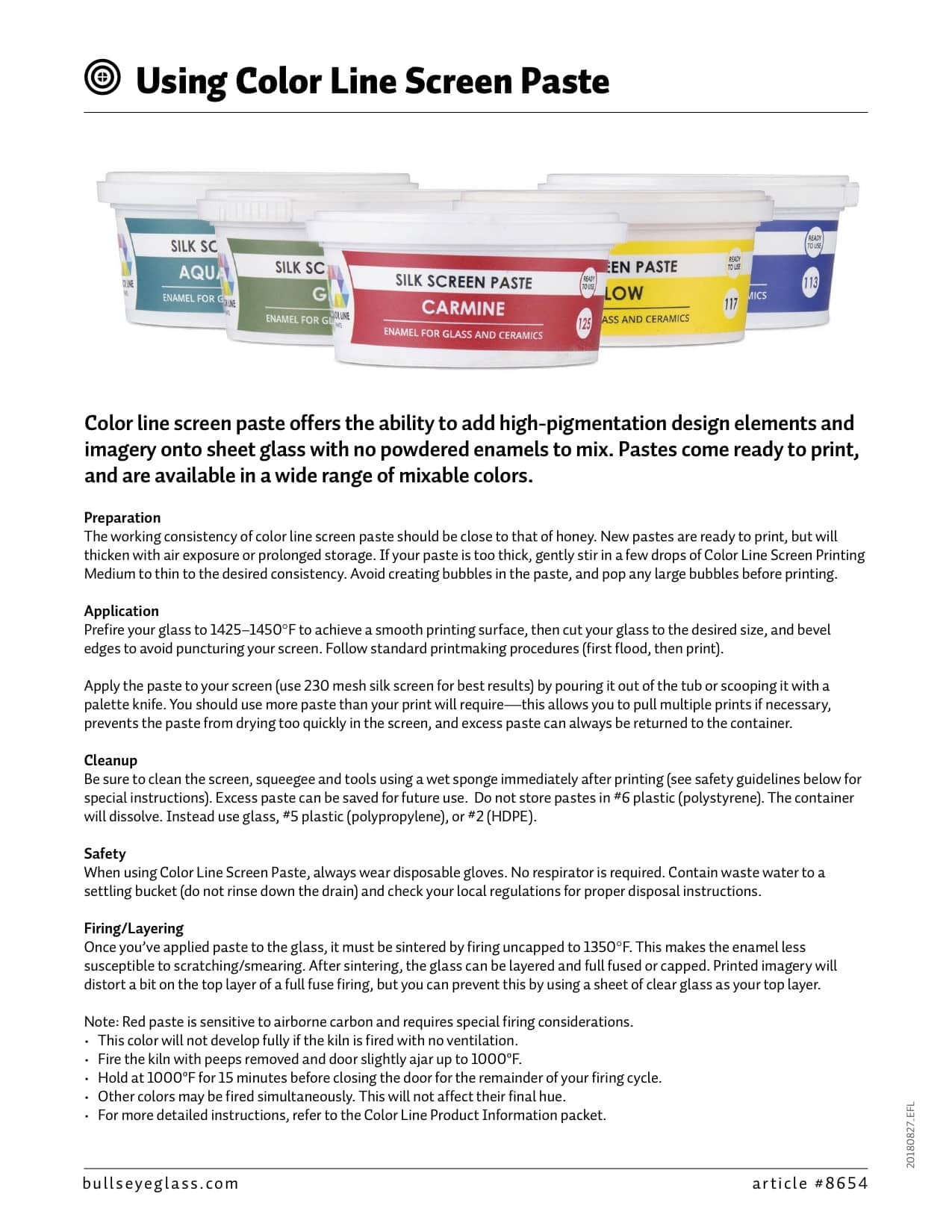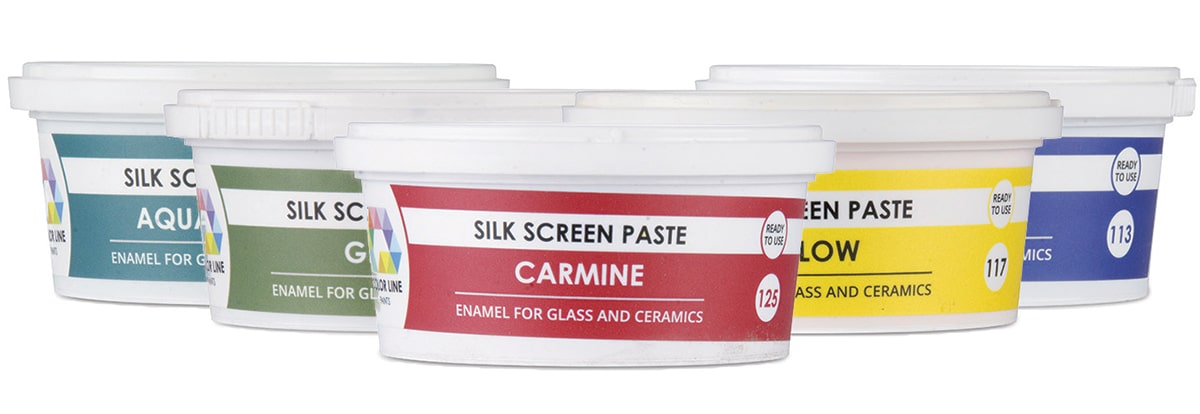Color Line screen paste offers the ability to add high-pigmentation design elements and imagery onto sheet glass with no powdered enamels to mix.
Pastes come ready to print, and are available in a wide range of mixable colors.
Preparation
The working consistency of color line screen paste should be close to that of honey. New pastes are ready to print, but will thicken with air exposure or prolonged storage. If your paste is too thick, gently stir in a few drops of Color Line Screen Printing Medium to thin to the desired consistency. Avoid creating bubbles in the paste, and pop any large bubbles before printing.
Application
Prefire your glass to 1425–1450°F to achieve a smooth printing surface, then cut your glass to the desired size, and bevel edges to avoid puncturing your screen. Follow standard printmaking procedures (first flood, then print).
Apply the paste to your screen (use 230 mesh silk screen for best results) by pouring it out of the tub or scooping it with a palette knife. You should use more paste than your print will require—this allows you to pull multiple prints if necessary, prevents the paste from drying too quickly in the screen, and excess paste can always be returned to the container.
Cleanup
Be sure to clean the screen, squeegee and tools using a wet sponge immediately after printing (see safety guidelines below for special instructions). Excess paste can be saved for future use. Do not store pastes in #6 plastic (polystyrene). The container will dissolve. Instead use glass, #5 plastic (polypropylene), or #2 (HDPE).
Safety
When using Color Line Screen Paste, always wear disposable gloves. No respirator is required. Contain waste water to a settling bucket (do not rinse down the drain) and check your local regulations for proper disposal instructions.
Firing / Layering
Once you’ve applied paste to the glass, it must be sintered by firing uncapped to 1350°F. This makes the enamel less susceptible to scratching/smearing. After sintering, the glass can be layered and full fused or capped. Printed imagery will distort a bit on the top layer of a full fuse firing, but you can prevent this by using a sheet of clear glass as your top layer.
Note: Red paste is sensitive to airborne carbon and requires special firing considerations.
- This color will not develop fully if the kiln is fired with no ventilation.
- Fire the kiln with peeps removed and door slightly ajar up to 1000ºF.
- Hold at 1000ºF for 15 minutes before closing the door for the remainder of your firing cycle.
- Other colors may be fired simultaneously. This will not affect their final hue.
- For more detailed instructions, refer to the Color Line Product Information packet.


